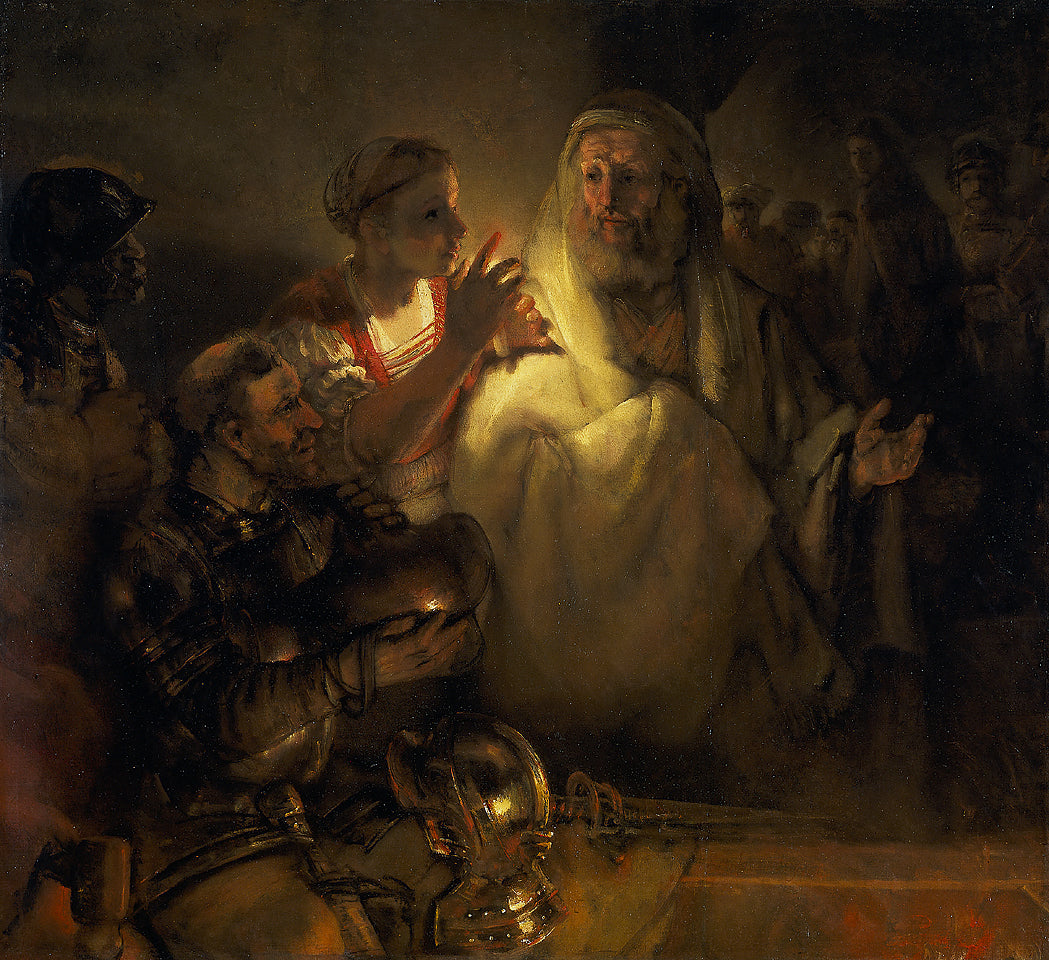
The Denial of St. Peter (Oil Painting) by Rembrandt
Share
On Holy Thursday, St. Peter denied Our Lord three times. He had just been ordained a priest, just been fed with the Eucharist, and yet he fell so far from what Christ had called him to be.
In his painting, The Denial of St. Peter, Rembrandt captured the moment Peter denied Jesus.
Overall, in Rembrandt’s paintings, three elements usually stand out:
• Chiaroscuro: He had a talent for using light and shadow to create depth and volume in his paintings. This technique, known as chiaroscuro, adds dramatic quality to his work.
• Realism: While today we are used to seeing realistic paintings, Rembrandt was breaking away from the more stylistic Byzantine paintings of his time. He focused on capturing the true essence of his subjects, whether they were portraits, landscapes, or historical scenes.
• Emotional Depth: Rembrandt's works often convey a deep sense of emotion and humanity. He captures human emotion, painting in one moment the entire inner lives of his subjects. Because of their humanity, his paintings resonate with viewers on a personal level.
The painting places Peter just off-center. He is holding out his left hand in a gesture of denial in response to the accusations made by Caiaphas' maidservant, who is standing next to him holding a candle.
To the left, two soldiers in armor are present, one of whom is sitting at a table. To the right, a chained Christ looks over his shoulder while he is being taken away.
In this painting, Rembrandt captures and makes clear that Peter is not just caught up in the heat of the moment. He has a cool and calculated demeanor. This is an act that he is putting on, down to the fake surprised face.
Rembrandt wants us to feel what Peter felt later: that he truly had failed the Lord, it was no accident, it was no momentary lapse of thought or a misspoken word. Peter did this. He is not innocent at all.
In the painting, the maidservant holds a light. The light always has deep symbolism. Here, Peter can let the light shine and stand in the truth, or he can turn away from the light and go into the darkness.
He chose the darkness at that moment.
Finally, Rembrandt wants to bring us, the viewer, into his paintings. He does this by the light shining off the armor of the soldier seated closest to us. The soldier is turned more toward us, the viewer, as if he is about to address us.
There is a light shining off the helmet on the table. The light is shining from our vantage point, meaning that our face is revealed. There is a light shining on us, just as for Peter. The question Rembrandt wants us to ask is, will we publicly admit to being a follower of Christ? Or will we run into the darkness?